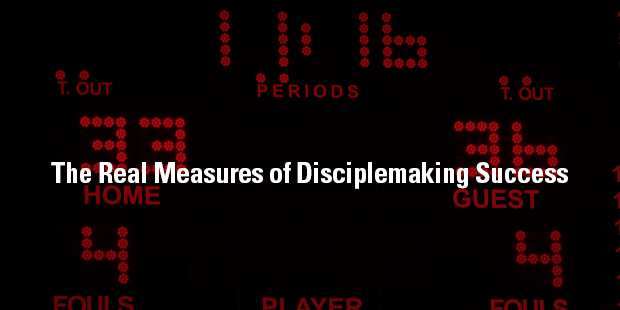It has become almost a cliché that the only constant today is change.
What moves it from a cliché to a truism is that the Greek philosopher Heraclitus said the same thing – 2,500 years ago.
In spite of that historical background, we all feel that change is different today: it is without end, and increasingly complex. We talk not of a single change, but of change as an ongoing phenomenon. It’s a collage, not a single simple image; one change overlaps with another, and it’s all change as far as the eye can see.
To some degree, the downside of change is inevitable. Whenever human communities are forced to adjust to shifting conditions, pain is ever present. But a significant amount of the waste and anguish we’ve witnessed in change management is avoidable.
The typical church has not operated well in a rapidly changing environment. Structure, systems, and culture have often been a drag on change rather than a facilitator.
The failure to sustain significant change recurs again and again despite substantial resources committed to the change effort, talented and committed people “driving the change,” and high stakes. In fact, leaders feeling an urgent need for change end up right: organizations that fail to sustain significant change end up facing crises.
This isn’t the sort of challenge you take on because it sounds good.
Adapting to and mastering change is not a choice. A significant part of a leader’s responsibility deals with being a change agent in the organization’s culture. In a time when changes come so fast and from so many unexpected angles, change is no longer a luxury but an imperative.
Even though change is a must for your organization, the “how-to’s” can often prove a problem. Many people lunge into change with no idea of its rules, its guiding principles, its nuances – and its dangers. Quite often disaster is the result. The only thing worse than ignoring change is leaping into it willy-nilly.
SOLUTION: Manage two internal tensions that drive behavior
THE QUICK SUMMARY – Switch: How to Change Things When Change is Hard by Chip Heath and Dan Heath
The primary obstacle to change is a conflict that’s built into our brains, say Chip and Dan Heath, authors of the critically acclaimed bestseller Made to Stick.
Psychologists have discovered that our minds are ruled by two different systems—the rational mind and the emotional mind—that compete for control. The rational mind wants a great beach body; the emotional mind wants that Oreo cookie. The rational mind wants to change something at work; the emotional mind loves the comfort of the existing routine. This tension can doom a change effort—but if it is overcome, change can come quickly.
In Switch, the Heaths show how everyday people—employees and managers, parents and nurses—have united both minds and, as a result, achieved dramatic results.
In a compelling, story-driven narrative, the Heaths bring together decades of counterintuitive research in psychology, sociology, and other fields to shed new light on how we can effect transformative change. Switch shows that successful changes follow a pattern, a pattern you can use to make the changes that matter to you, whether your interest is in changing the world or changing your waistline.
A SIMPLE SOLUTION
When it comes to organizational change, a key challenge becomes how to lead change while simultaneously garnering team initiative and involvement.
In other words, all organizational change starts with your team, involves them throughout, and will only be successful when they are a part from beginning to end.
Change in your organization comes about in and through your teams by making three things happen.
For anything to change, someone has to start acting differently. Ultimately, all change efforts boil down to the same mission: Can you get people to start behaving in a new way?
Your brain isn’t of one mind.
The conventional wisdom in psychology is that the brain has two independent systems at work at all times. First, there’s the emotional side. It’s the part of you that is instinctive, that feels pain and pleasure. Second, there’s the rational side. It’s the part of you that deliberates and analyzes and looks into the future.
The tensions of this conflict are captured best by an analogy used by UVA professor Jonathan Haidt: he says that our emotional sided is an Elephant and our rational side is its Rider.
Perched atop the Elephant, the Rider holds the reins and seems to be the leader. But the Rider’s control is precarious because the Rider is so small relative to the Elephant. Anytime the six-ton Elephant and the Rider disagree about which direction to go, the Rider is going to lose.
With these terms in mind, here is a basic three-part framework that can guide you in any situation when you need to change behavior.
Direct the Rider. What looks like resistance is often a lack of clarity. So provide crystal-clear direction.
Motivate the Elephant. What looks like laziness is often exhaustion. The Rider can’t get his way by force for very long. So it’s critical that you engage people’s emotional side – get their elephants on the path and cooperative.
Shape the Path. What looks like a people problem is often a situation problem. The situation – including the surrounding environment – is referred to as the “Path.” When you shape the path, you make change more likely, no matter what’s happening with the Rider and the Elephant.
Chip Heath and Dan Heath, Switch: How to Change Things When Change is Hard
A NEXT STEP
When change works, it tends to follow a pattern. The people who change have clear direction, ample motivation, and a supportive environment. In other words, when change works, it’s because the Rider, the Elephant, and the Path are all aligned in support of the switch.
For things to change, somebody, somewhere, has to start acting differently. Maybe it’s you; maybe it’s your team. Picture that person (or people).
Each has an emotional Elephant side and a rational Rider side. You’ve got to reach both. And you’ve also got to clear the way for them to succeed. In short, you must do three things.
Write the following phrases, one each, on the top of a chart tablet:
- Direct the Rider
- Motivate the Elephant
- Shape the Path
Next, write the names of your team along the left side of the chart tablet, creating a grid for each team member and the three phrases at the top.
For each team member, answer the following questions, and fill in the appropriate action.
- Direct the Rider – How can I provide clarity to this team member?
- Motivate the Elephant – How can I engage the emotional side of this team member?
- Shape the Path – How can you make your team member’s “journey” easier?
After completing the chart, schedule time over the next six weeks to address all the actions listed. As you complete the actions, make brief notes on the chart to track your progress.
At the end of six weeks, review the chart and discuss with each team member your actions and their reactions.
In change there is learning. The organization doesn’t just do something new; it builds its capacity for doing things in a new way – indeed, it builds capacity for ongoing change. An emphasis on inner and outer changes gets to the heart that organizations are facing today. It is not enough to change strategies, structures, and systems, unless the thinking that produced those strategies, structures, and systems also changes.
Excerpt taken from SUMS Remix 102-3, released September 2018.
This is part of a weekly series posting excerpts from one of the most innovative content sources in the church world: SUMS Remix book excerpts for church leaders.
Each issue SUMS Remix takes a practical problem in the church and looks at it with three solutions; each solution is taken from a different book. Additionally, a practical action step is included with each solution.
As a church leader you get to scan relevant books based on practical tools and solutions to real ministry problems, not just by the cover of the book. Each post will have the edition number which shows the year and what number it is in the overall sequence. (SUMS Remix provides 26 issues per year, delivered every other week to your inbox).
>> Subscribe to SUMS Remix <<

Tags: Change, Chip Heath, Dan Heath, Switch: How to Change Things When Change is Hard
|
What is MyVisionRoom? > | Back to Leadership >






























